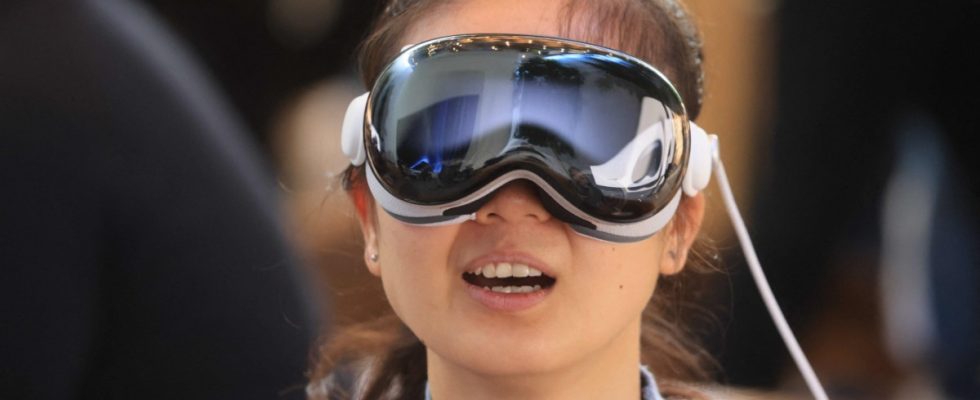It looks like a cross between diving goggles and ski goggles, with a dash of robot flair from the animated film Wall-E. And it represents the new way of operating computers. At least that’s what Apple says, and in this regard they agree with Mark Zuckerberg, head of Meta, formerly Facebook. Naturally, the two do not agree on how good the respective devices are that will soon allow humanity to use computers in a completely different way: their 3D glasses.
Meta has been selling its Quest brand glasses for a long time. Apple initially only supplied developers, but since the beginning of February normal customers in the USA have also been able to buy the glasses for an impressive $3,500. Apple has given a return period of 14 days – it may not be the case. And that seems to be the case, at least for some customers. The US specialist portal The Verge has Examples collected from peoplewho want to make use of their right of return. Is a PR disaster brewing?
An employee of The Verge complains about the weight of the glasses, another early adopters proves him right. Another user complains about nausea, but also admitsthat he had been operated on as a child for strabismus and that he also got sick on other occasions. A buyer who identifies as a tech influencer He praises Apple’s new development highly, but unfortunately it gives him a headache after just ten minutes, which is why he unfortunately has to send it back.
Apple’s Vision Pro – a PR disaster?
It would be too early to derive a problem for Apple from this. There aren’t too many of the glasses on the market yet, and the range of apps is manageable. And who knows whether the negative reactions of some users aren’t also being deliberately spread. However, if the impression were to solidify, the Vision Pro could become a problem for Apple. The company is surrounded by the aura of infallibility. Of King Midas of the gadget world, who turns everything he touches into gold.
The problem could lie somewhere else. Apple is a company that caters to the masses. Smartphones, watches, laptops – it’s always about huge quantities, otherwise the billions that Apple is now investing in research and development could hardly be justified and ultimately not refinanced. But the question is whether the extremely expensive glasses can ever become a mass product.
The Vision Pro allows you to completely immerse yourself in virtual worlds using high-resolution screens (virtual reality) as well as all kinds of content into the outside world recorded by cameras (augmented reality). The user’s eye area is largely hidden, but a screen shows other people’s facial reactions, which are recorded by cameras inside.
A tool, not a mass product
Most observers see the glasses more as a tool for special applications. The Swabian technology company Teamviewer, for example, has developed an app for the new glasses that can be used for remote maintenance. An example: The coffee machine in a café is broken, a technician is on site. If you can’t figure out the complicated problem yourself, you can use your iPhone camera to create a 3D model of the coffee machine and send it to an expert at the coffee machine manufacturer. The expert looks at the model on his glasses and can give the technician tips. This saves time and travel costs.
“The glasses further advance the fusion of digital space and reality and offer users a new level of immersion,” says Mei Dent, Chief Product & Technology Officer at Teamviewer. The Göppingen-based company, which offers business software, sees great potential for use in industry for glasses like the Vision Pro.

